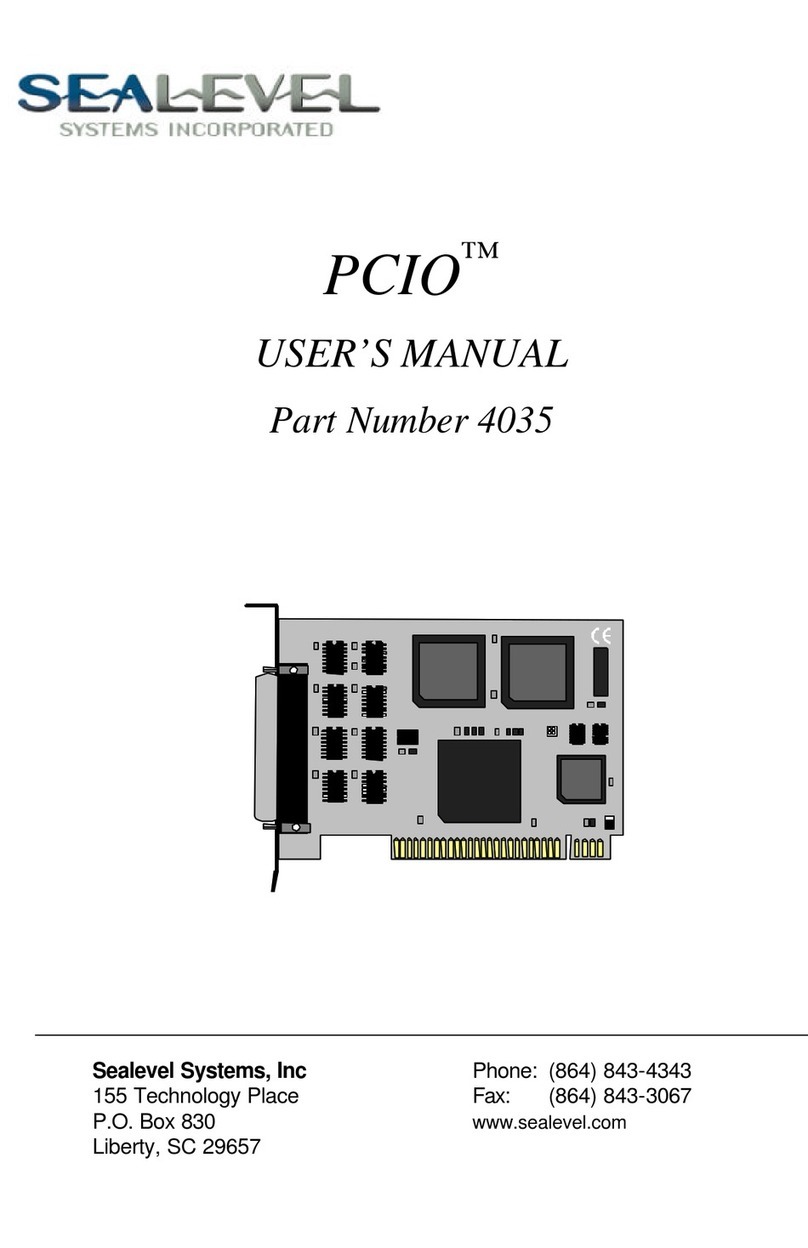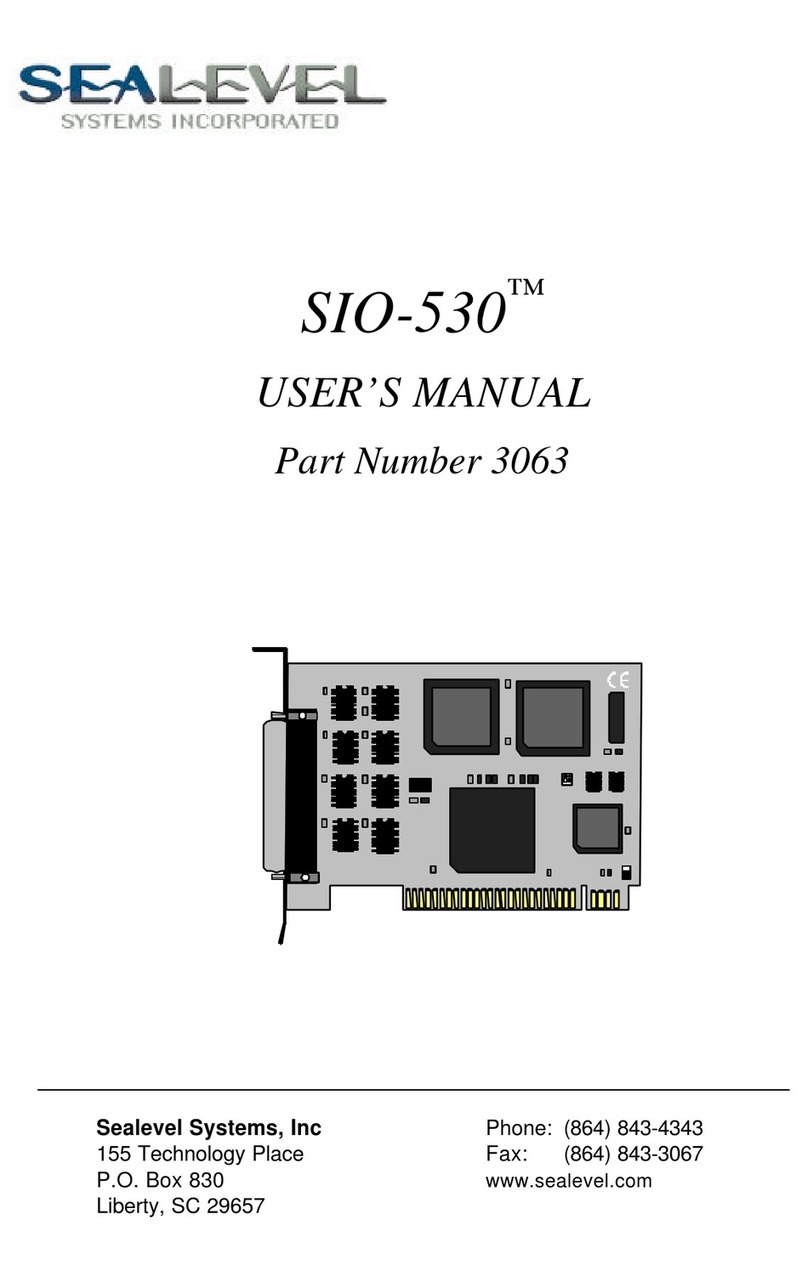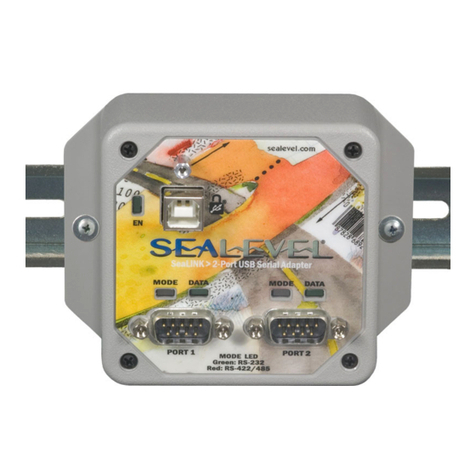SeaLevel ACB-MP.LPCI User manual
Other SeaLevel Computer Hardware manuals
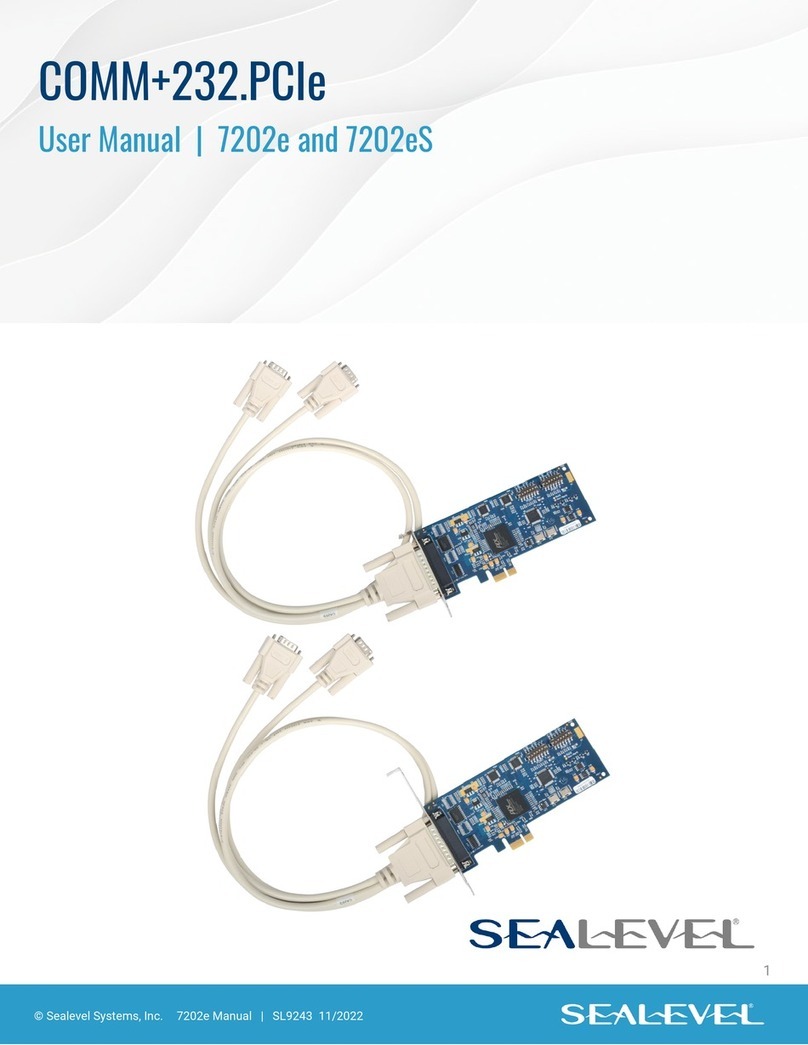
SeaLevel
SeaLevel COMM+232.PCIe User manual

SeaLevel
SeaLevel Route 56 User manual

SeaLevel
SeaLevel 8004H User manual
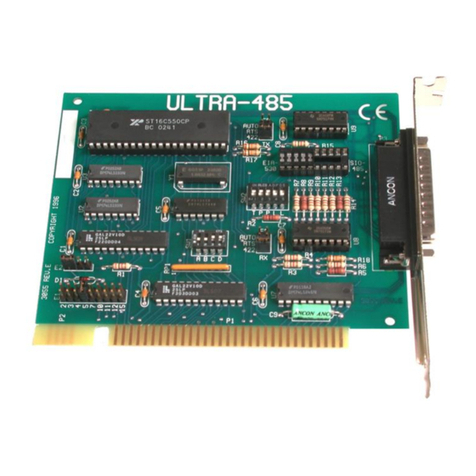
SeaLevel
SeaLevel ULTRA 485 User manual
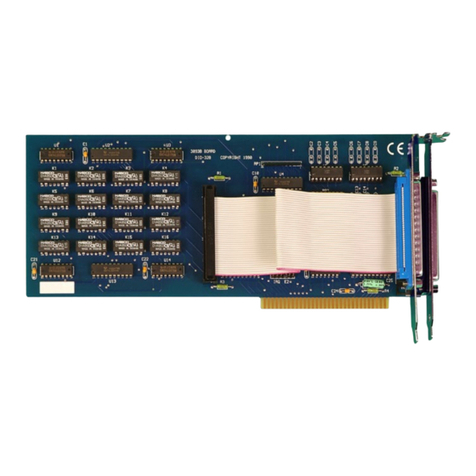
SeaLevel
SeaLevel DIO-32B User manual
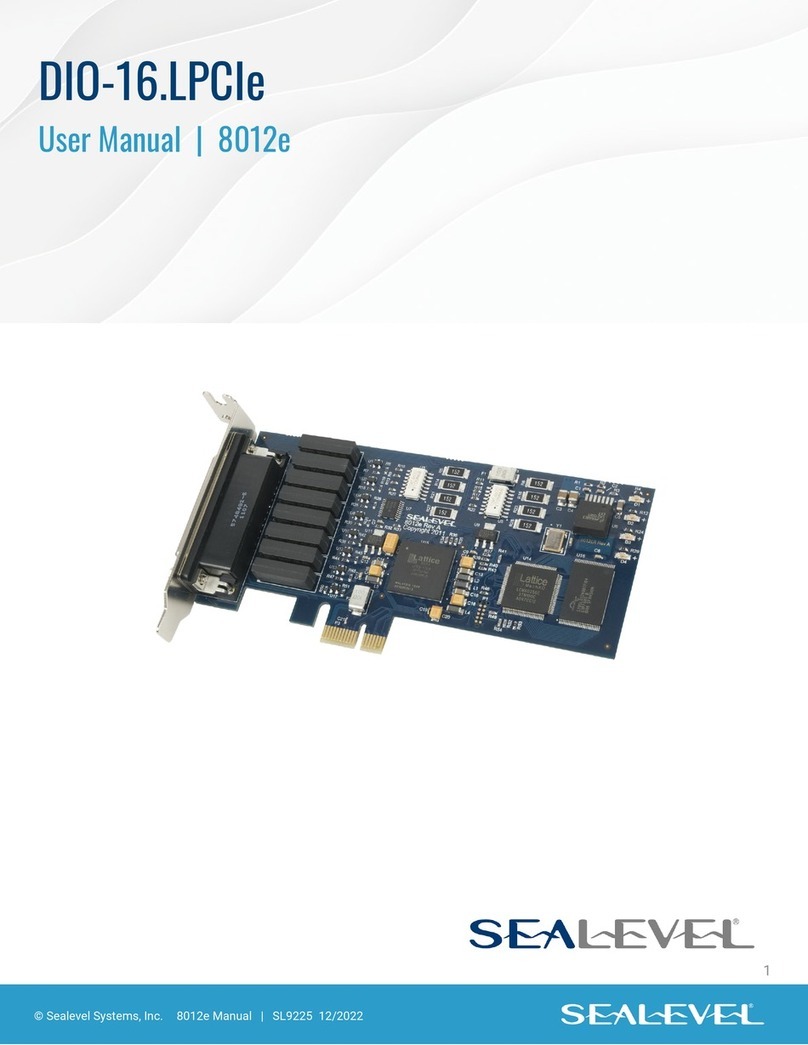
SeaLevel
SeaLevel DIO-16.LPCIe User manual
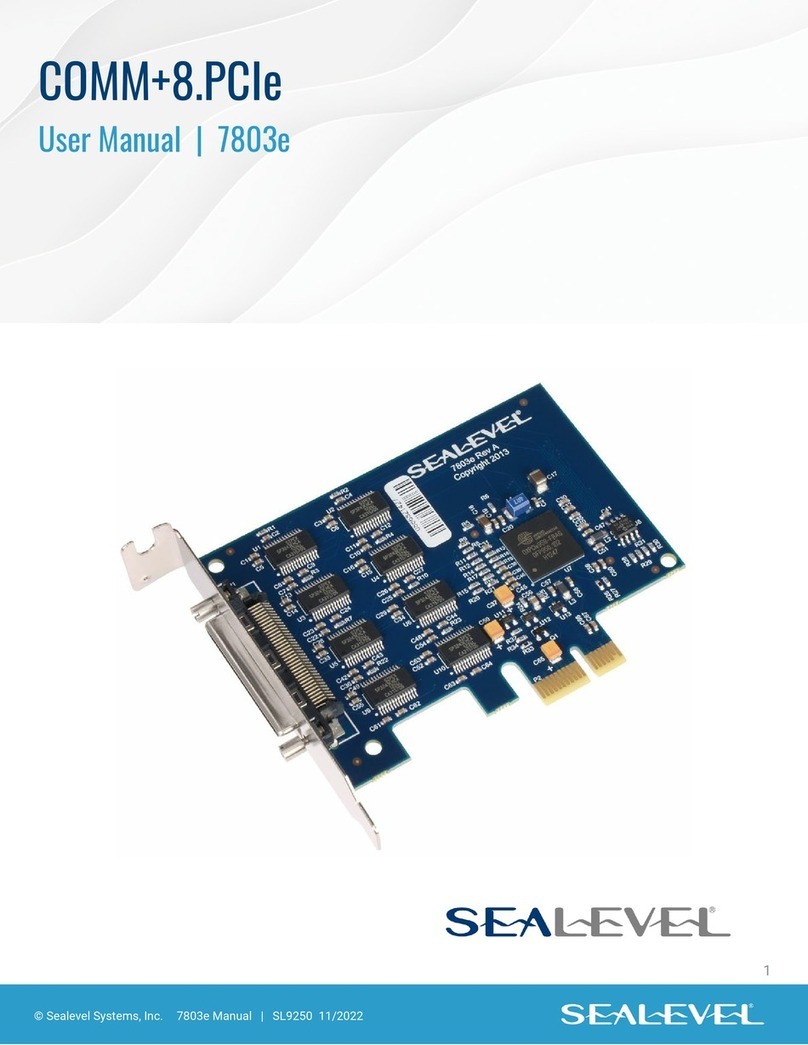
SeaLevel
SeaLevel ULTRA COMM+8.PCIe User manual
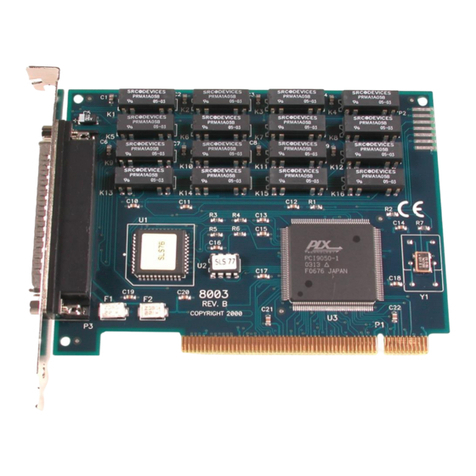
SeaLevel
SeaLevel REL-16.PCI User manual

SeaLevel
SeaLevel C4-104.ULTRA User manual
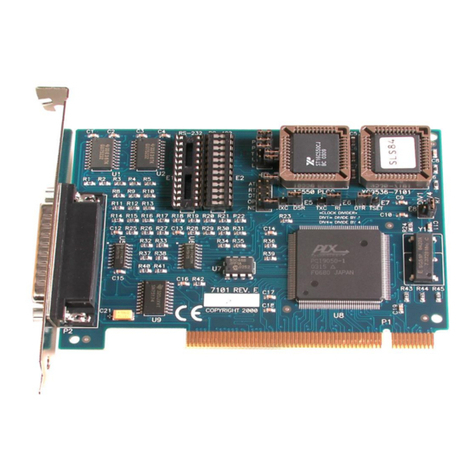
SeaLevel
SeaLevel ULTRA 530.PCI User manual
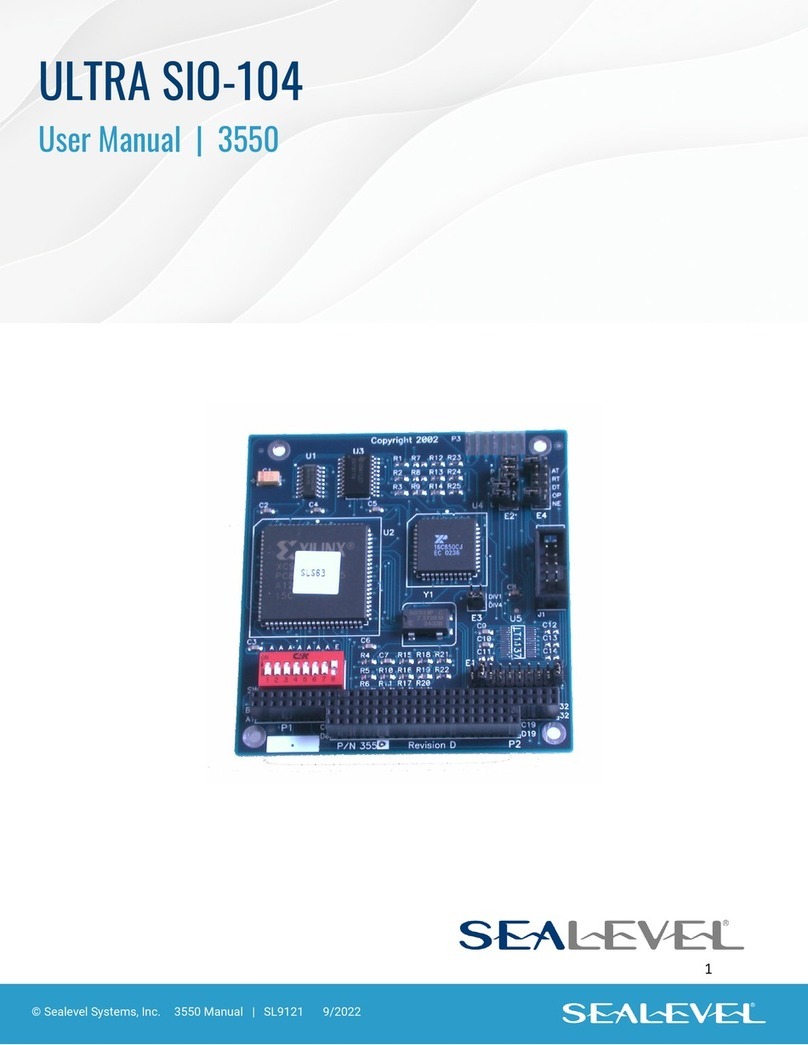
SeaLevel
SeaLevel SIO-104 User manual
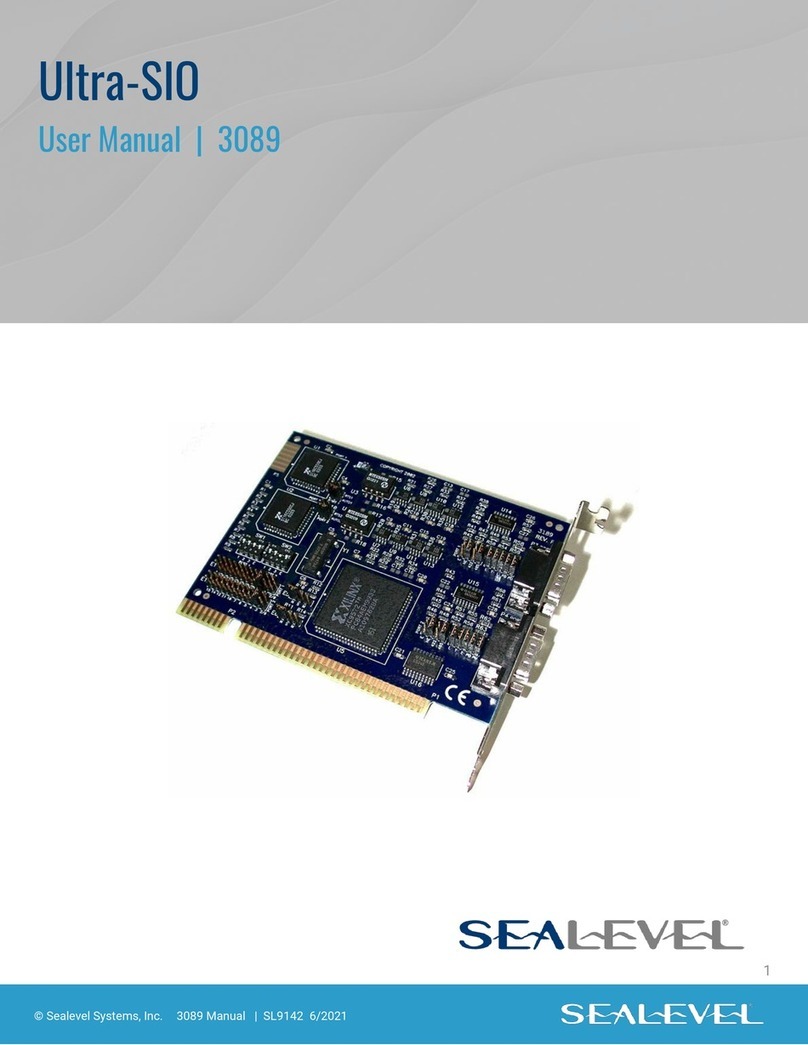
SeaLevel
SeaLevel Ultra-SIO 3089 User manual
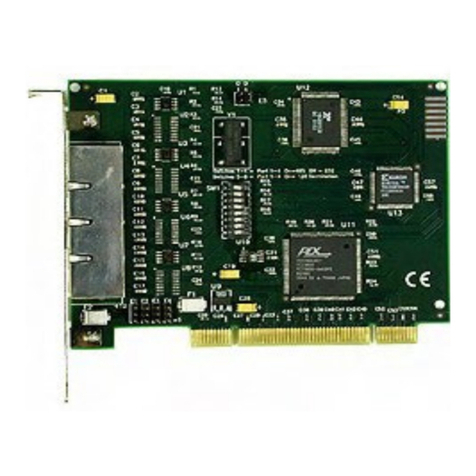
SeaLevel
SeaLevel POS+4.PCI User manual
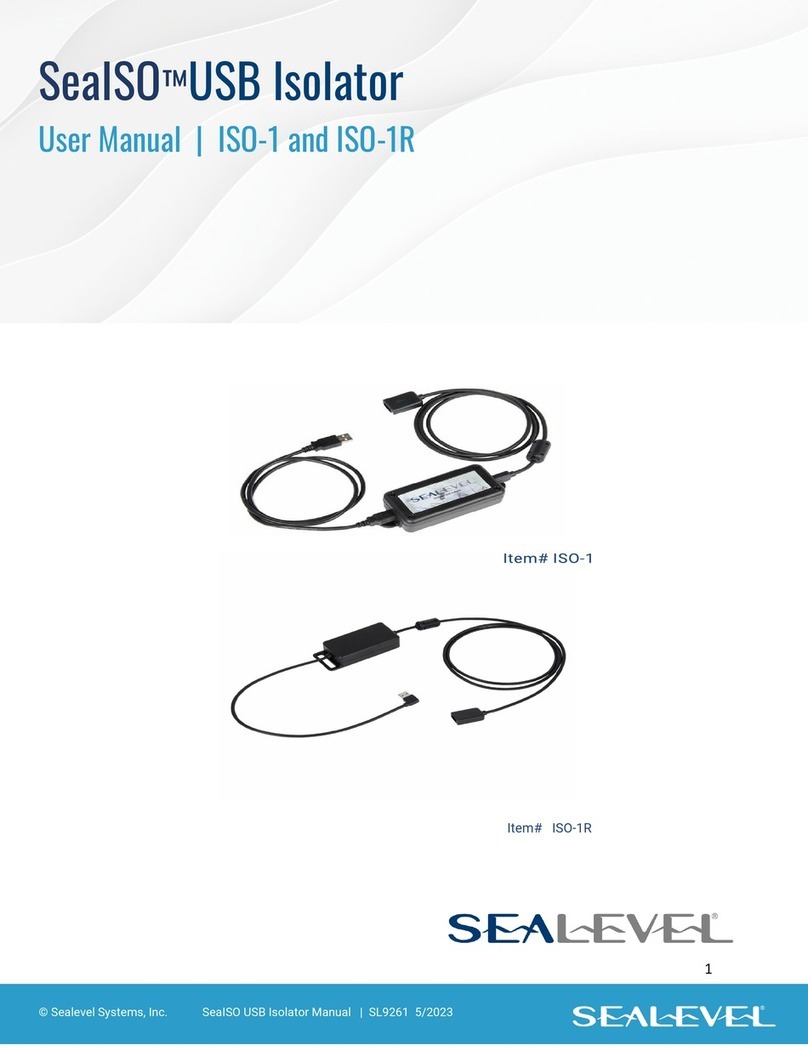
SeaLevel
SeaLevel SeaISO ISO-1 User manual
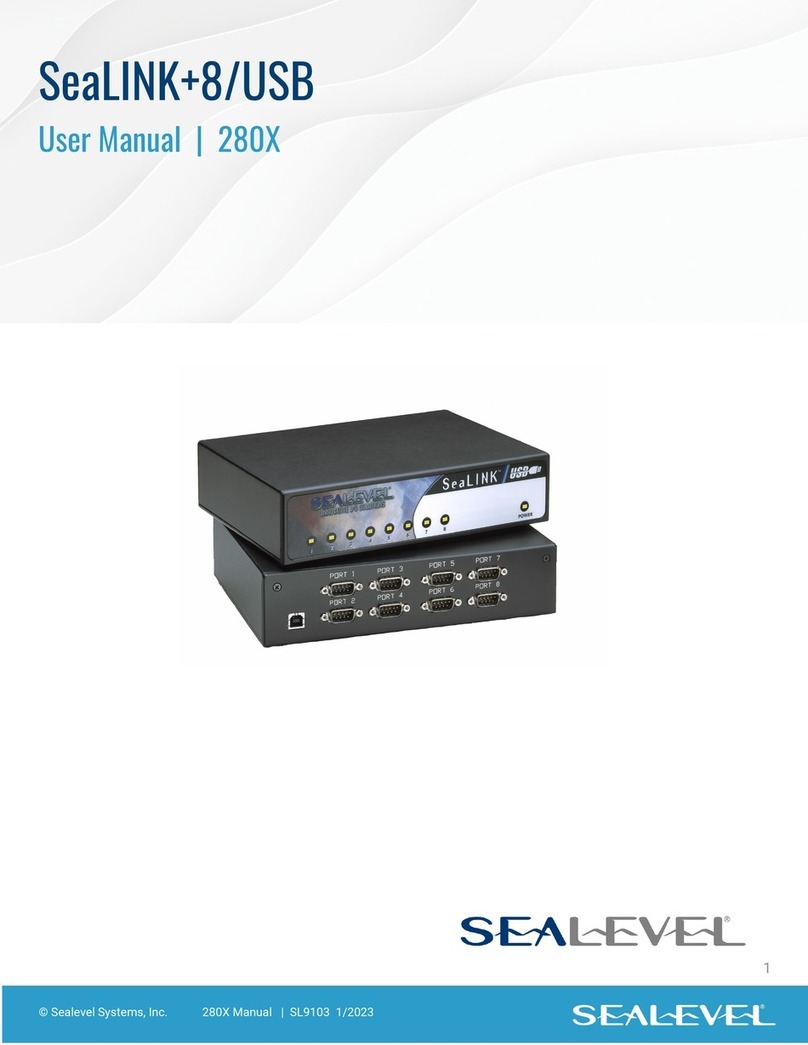
SeaLevel
SeaLevel SeaLINK+8/USB User manual
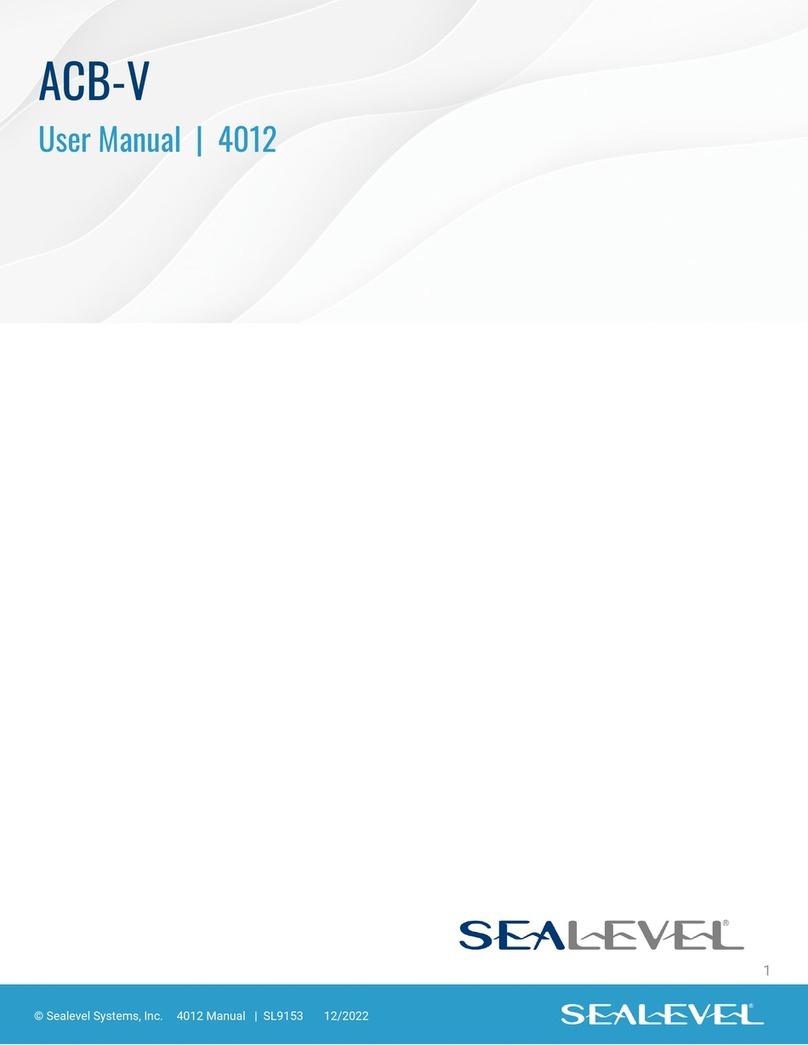
SeaLevel
SeaLevel ACB-V User manual
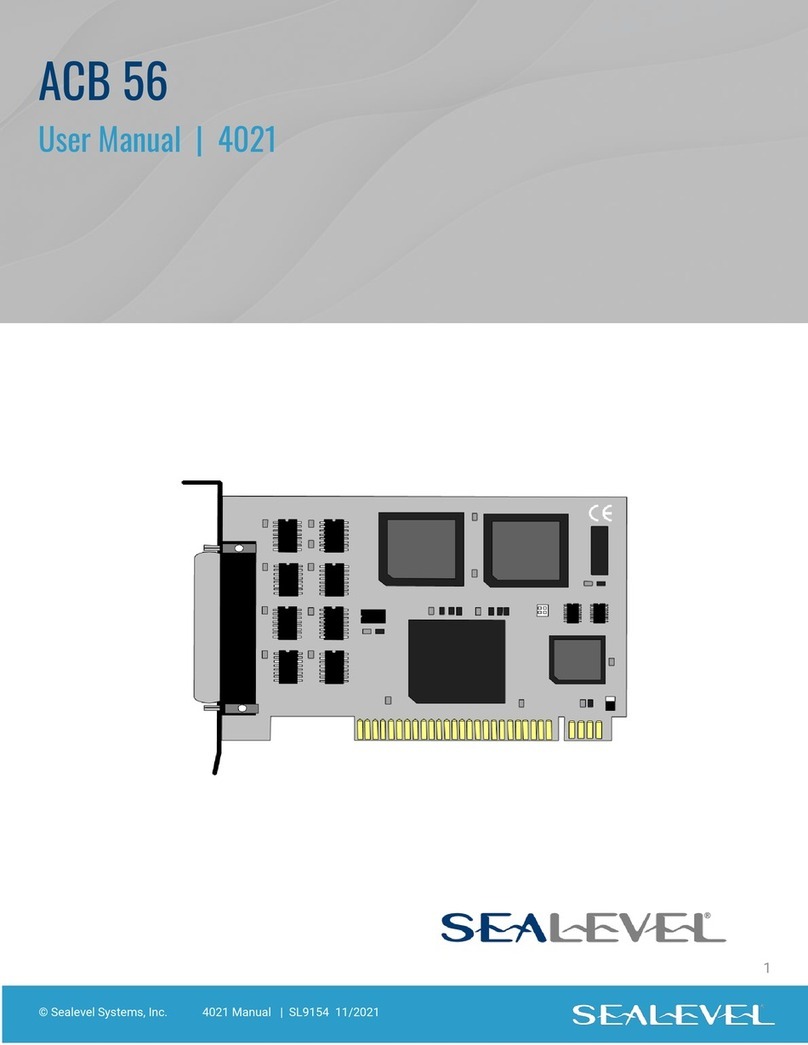
SeaLevel
SeaLevel ACB 56 User manual
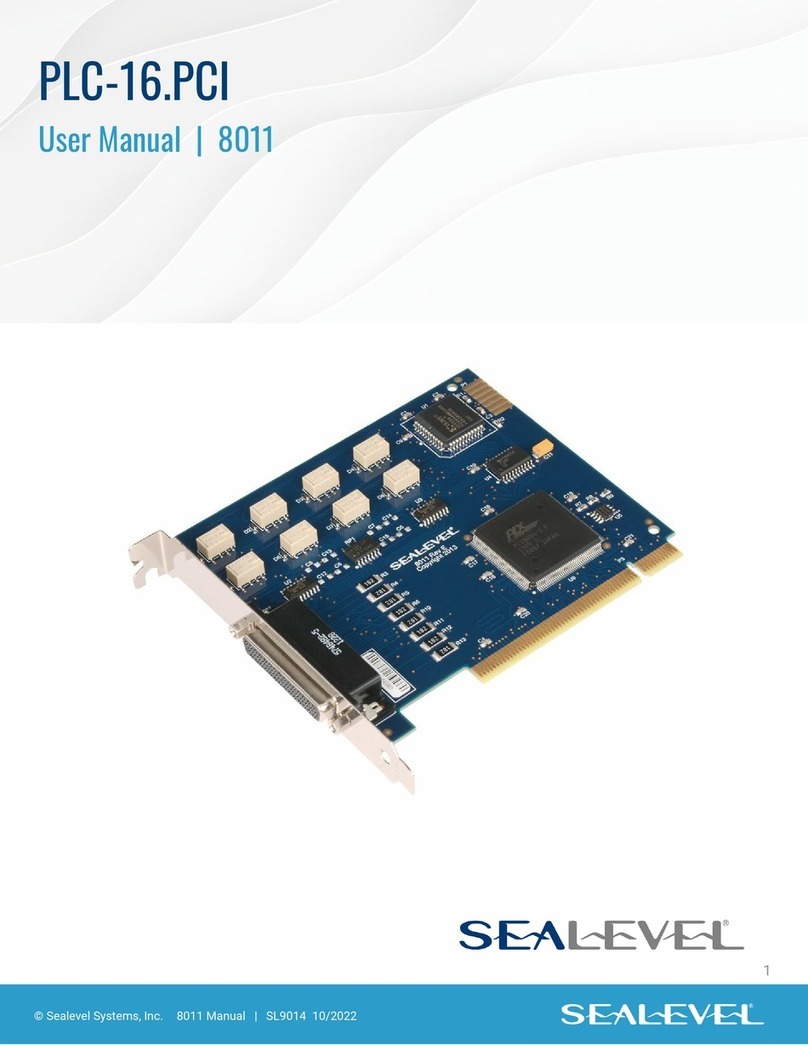
SeaLevel
SeaLevel PLC-16.PCI User manual
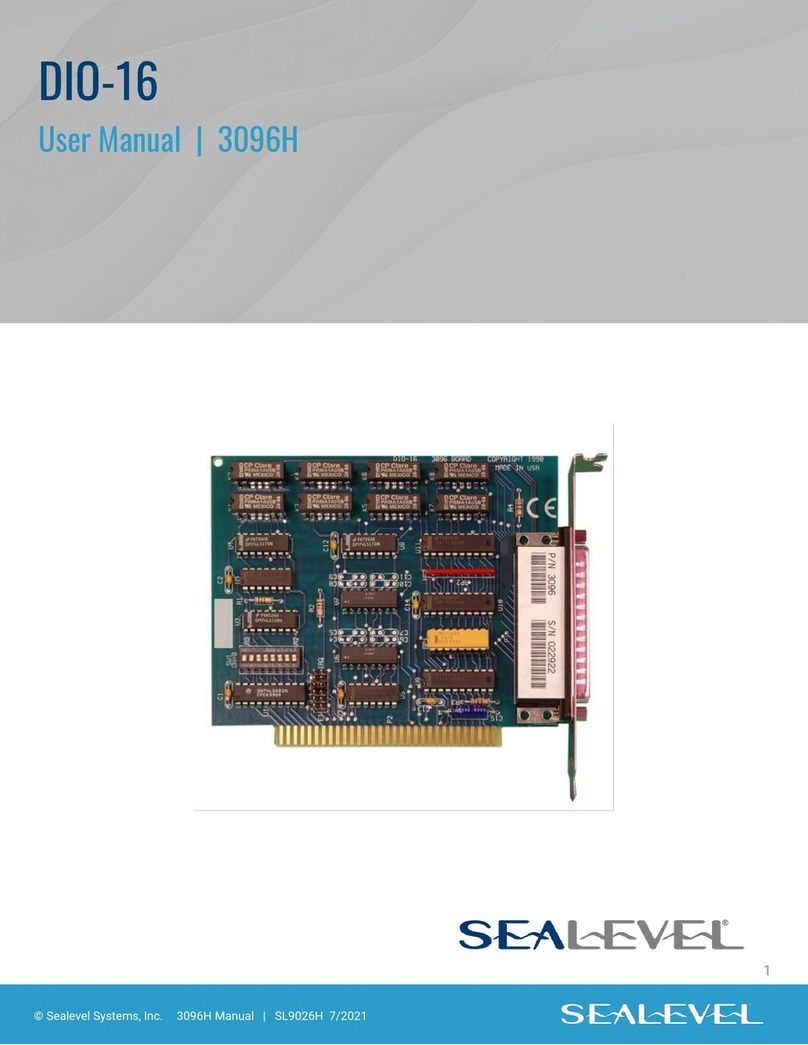
SeaLevel
SeaLevel SeaPORT DIO-16 User manual
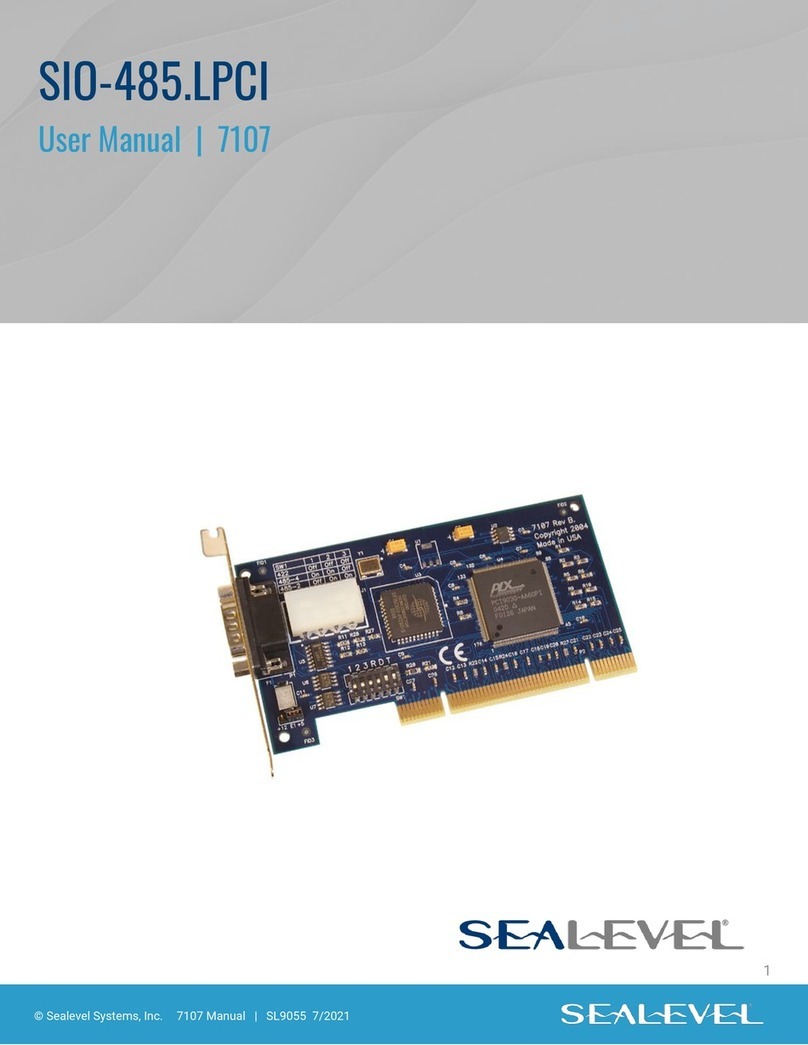
SeaLevel
SeaLevel SIO-485.LPCI User manual
Popular Computer Hardware manuals by other brands

EMC2
EMC2 VNX Series Hardware Information Guide

Panasonic
Panasonic DV0PM20105 Operation manual

Mitsubishi Electric
Mitsubishi Electric Q81BD-J61BT11 user manual

Gigabyte
Gigabyte B660M DS3H AX DDR4 user manual

Raidon
Raidon iT2300 Quick installation guide

National Instruments
National Instruments PXI-8186 user manual
